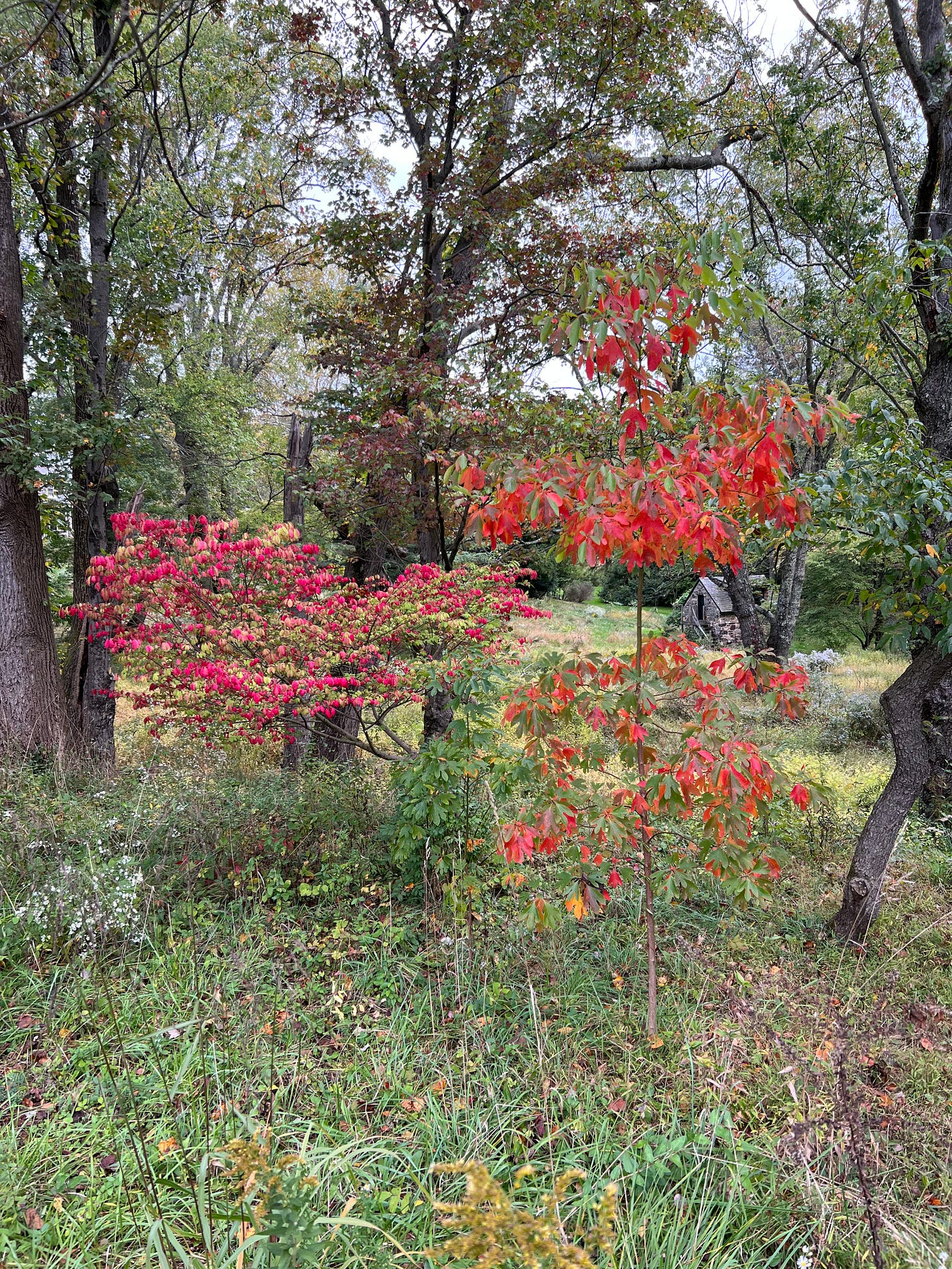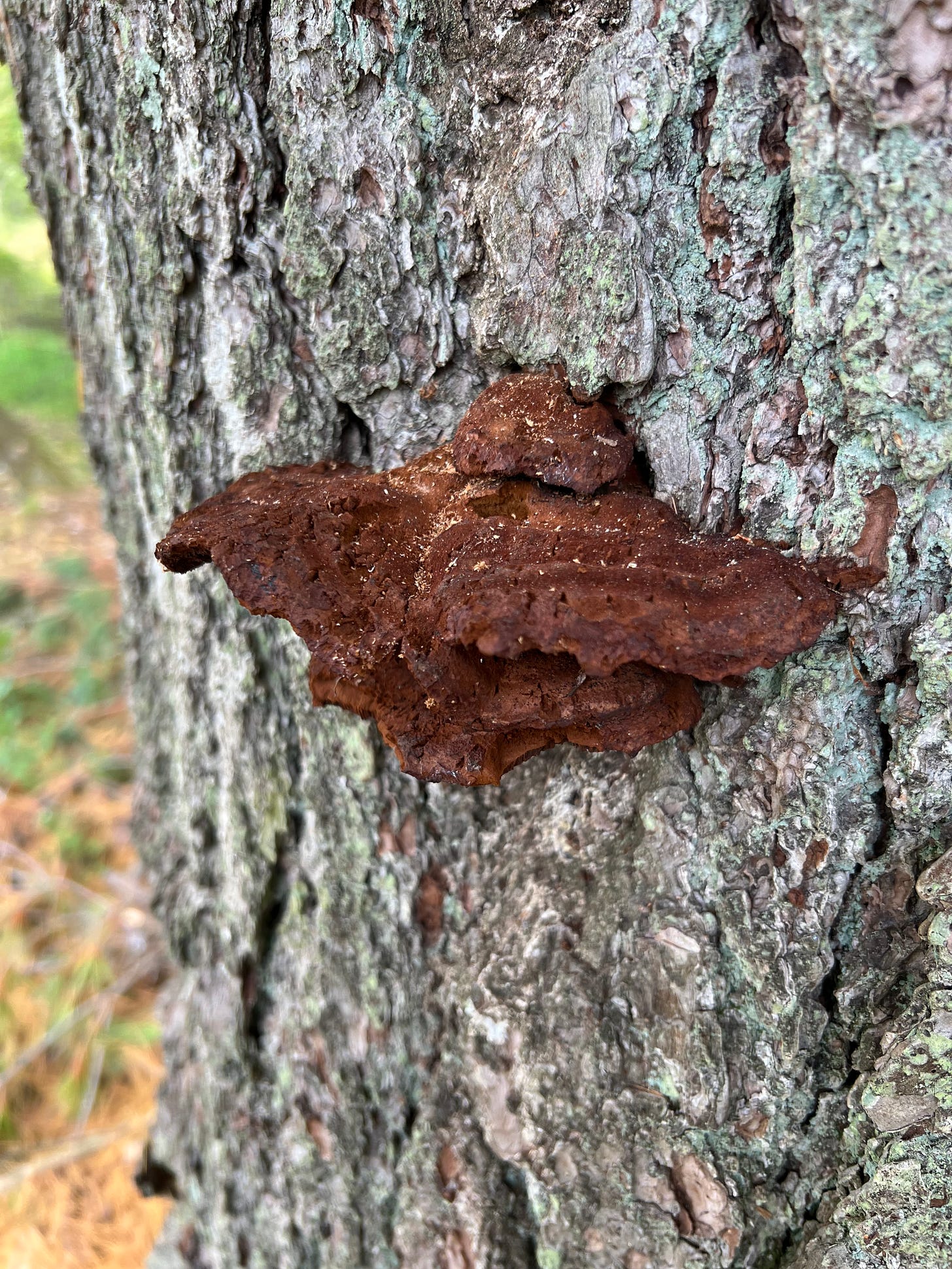My friend Danilo Maffei, who designed our back patio and patio gardens, reached out a month ago to ask whether I’d host a visit from a group of Iowa State University horticulture students.
A chance to talk about backyard stewardship at Puddock Hill? Moi? Let me check my calendar.
The students were on a grand tour of gardens in the Northeast. They visited the New York Botanical Garden, the High Line, Chanticleer in Wayne, PA, and a few other public gardens. Mine was one of two private gardens they visited. The grand finale would be Longwood Gardens.
Here’s a picture of Dan explaining to the students how he evaluated the property a few years ago:
His brief presentation reminded me of the land we’ve been gifted by nature on our site: two ponds, dry meadows, wet meadow, a stream, wet woods, upland woods—all on just sixteen acres.
I explained to the students my philosophy, inspired by Douglas Tallamy, Mt. Cuba Center, and others, of supporting wildlife by encouraging and installing native plants, banishing whitetail deer, fighting invasives, and abjuring chemicals.
The most important question I received was the most basic: “Why are you doing this?”
My abbreviated answer was that I have a daughter and I don’t want to leave her a ruined world. (For a cautionary but compelling tale, check out my latest novel, We Once Were Giants.) The inspiration behind that answer is Tallamy’s argument that we must plant natives to support indigenous arthropods near the bottom of the food chain for the survival of native birds, amphibians, reptiles and the web of life that sustains humanity.
I had recently made a similar point (not in response to a question) in a Facebook group I belong to called Native Plants and Pollinator Friendly Plants of the Northeast. I was inspired to create that post because I’d been seeing a number of posts soliciting advice on how to rid their plants of insects. I concluded the post by saying one of the main purposes of native gardening is precisely to give insects something to eat in order to give everyone else something to eat. When it comes to native gardening, I concluded, “insects are a feature, not a bug.” Yeah, pun intended.
The post was well received, but it triggered one member to complain that she’d plant whatever the hell she wanted and this was all my opinion. Notwithstanding the obvious question of why someone with this attitude would bother to join a group dedicated to native plants, what stuck in my craw was her labeling science as opinion. Um, no. Nuh uh.
Scientific consensus does sometimes change, but it is based upon experiment and observation, and it has generally tended toward a more accurate description and understanding of how nature works. It is well documented that arthropods are in steep decline all over the world and a mass extinction event has begun largely because of anthropogenic factors, notably habitat destruction, use of pesticides and other chemicals, and climate change. The details are still coming into focus. The general trend is pretty well established.
Anyone reading this is certainly free to garden however they wish. They are free to ignore the scientific consensus in their own actions. They are free to be supremely selfish or extremely altruistic or anything in between. They are free to set their own hair on fire. But they are not entitled to their own facts.
End of rant.
I pursue backyard stewardship because in a world at war with nature, I want to give the little critters a chance, and thereby give generations after us a chance.
My answer seemed to satisfy the students.
Apropos of my recent newsletter on avoidance of herbicides, even for a good cause, an article crossed my feed this week that should concern anyone who still chooses to use Roundup. The title of the Phys.org article speaks for itself: “Roundup herbicide ingredient connected to epidemic levels of chronic kidney disease.”
The article reported on “a massive field study of the wells supplying drinking water to the Sri Lankan communities” conducted by scientists from Duke University, the results of which appeared in the journal Environmental Science and Technology Letters. What prompted the study was the fact that “For the past couple of decades, tens of thousands of people living in rural Sri Lanka have been devastated by kidney failure due to unclear causes… Similar incidences of mysterious kidney diseases have emerged in tropical farming communities around the world.”
Here’s the money quote:
“It was always thought that this chemical would break down very quickly in the environment, but it seems to stick around a lot longer than we expected when it complexes in hard water," said Nishad Jayasundara, the Juli Plant Grainger Assistant Professor of Global Environmental Health at Duke. "We have to consider how glyphosate is interacting with these other elements, and what happens to glyphosate when you take that into your body as a complex.”
As it happens, we have hard water where we live. More to the point, 85 percent of all wells in the United States are said to have hard water.
The study focused on the effects of glyphosate in water consumed by humans, but let’s remember the wildlife also lapping up water that is potentially polluted by this chemical.
We have been blithely told for decades that glyphosate is safe, but the vast majority of those telling us so stood to gain from its sale. When choosing to release any kind of chemical into the environment, please consider how much we don’t know—or what they’re not telling us.
Brilliant fall color on a young native sassafras:
Isn’t that at least as dramatic as the color on the nearby invasive burning bush I’ve yet to remove?
Woodland aster between the barn meadow and the wet woods:
We did a refresh on the back patio garden and hope for dramatic results next spring and summer:
I couldn’t get an ID on this mushroom, which is growing from the trunk of a white pine below the big pond:
Native hairy white oldfield aster (Symphyotrichum pilosum) (I think) flowers in sunshine nearby. A delicate dragon fly rests on its flower:
A few feet away, this white-flowering form of great blue lobelia (Lobelia siphilitica) popped up late:










